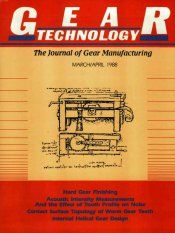Hard Gear Finishing (HGF), a relatively new technology, represents an advance in gear process engineering. The use of Computer Numerical Controlled (CNC) equipment ensures a high precision synchronous relationship between the tool spindle and the work spindle as well as other motions, thereby eliminating the need for gear trains. A hard gear finishing machine eliminates problems encountered in two conventional methods - gear shaving, which cannot completely correct gear errors in gear teeth, and gear rolling, which lacks the ability to remove stock and also drives the workpiece without a geared relationship to the master rolling gear. Such a machine provides greater accuracy, reducing the need for conventional gear crowning, which results in gears of greater face width than necessary.
